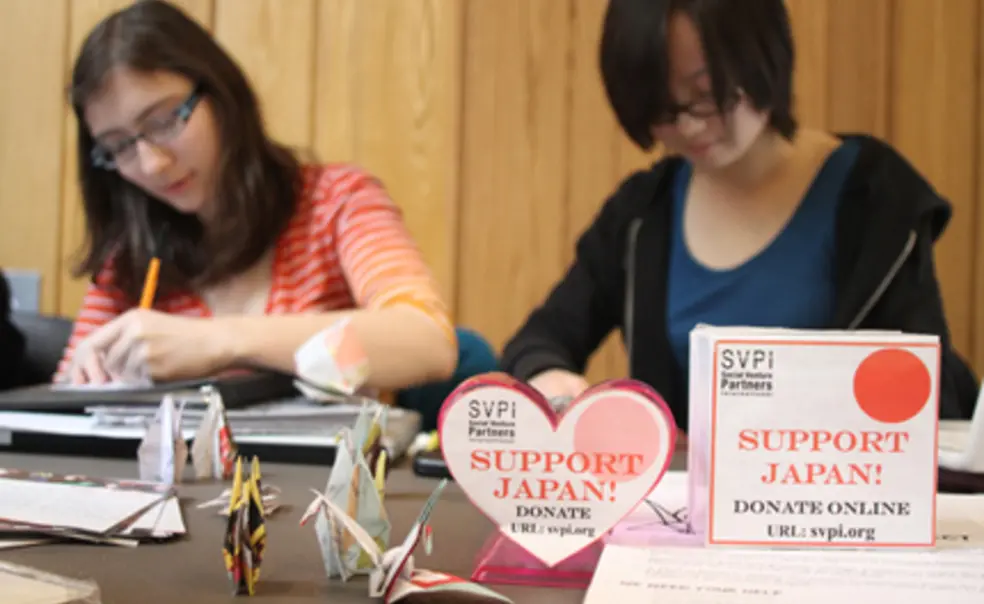Paper-crane project aims to raise awareness of disaster in Japan

Bonnie Eisenman ’14, left, and Kai Shibuya ’14 fold paper cranes at Frist Campus Center. To date, organizers of the project have collected more than 5,800 cranes. (Photos by Habin Chung ’12)
With millions of dollars in financial support and supplies making their way to the Japanese earthquake victims in the next few weeks, a group of students from Princeton and Stanford have launched something different to show their support: the Million Crane Project, a nationwide effort to unite major universities, high schools, and other organizations in a massive crane-folding endeavor to raise awareness of the earthquake and its devastating effects.
From 9 a.m. to 9 p. m. Monday through Friday, students, faculty, and community members have been stopping by the Million Crane Project table at the Frist Campus Center in between classes and errands to fold paper cranes. The crane-folding idea comes from the Japanese legend of senbazuru, which promises a wish to anyone who folds one thousand paper cranes. The project team hopes to collect one million paper cranes by May 11 – exactly two months after the disaster – to be used in the creation of a piece of memorial art by artists such as Makoto Fujimura.
“I’ve become convinced that this project will add a new dimension to what international aid is or how anyone should support a country,” student coordinator Shiro Kuriwaki ’14 said. “It’s much more sustainable than donations – it prevents donor fatigue. Folding cranes has no cost.”
Paper for the cranes comes from a number of sources, including donations from Japanese families and magazines supplied by individuals, the Undergraduate Student Government office, and Paper Source on Nassau Street. (The magazine paper is cut into origami squares with a paper-cutting machine.)
Kuriwaki added that the project, which has at the time of writing received 5,800 cranes from all over the world, is an effective long-term method of showing support for victims in heavily affected areas of Japan.
“They do need money and enough food, but they also need a time to smile or relax or feel that someone cares for them,” he said.
For more information, visit the Million Crane Project website, www.millioncraneproject.org.












No responses yet